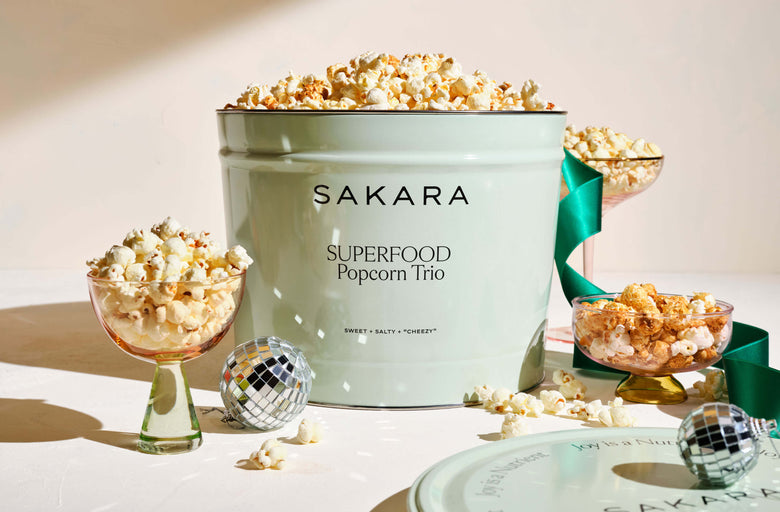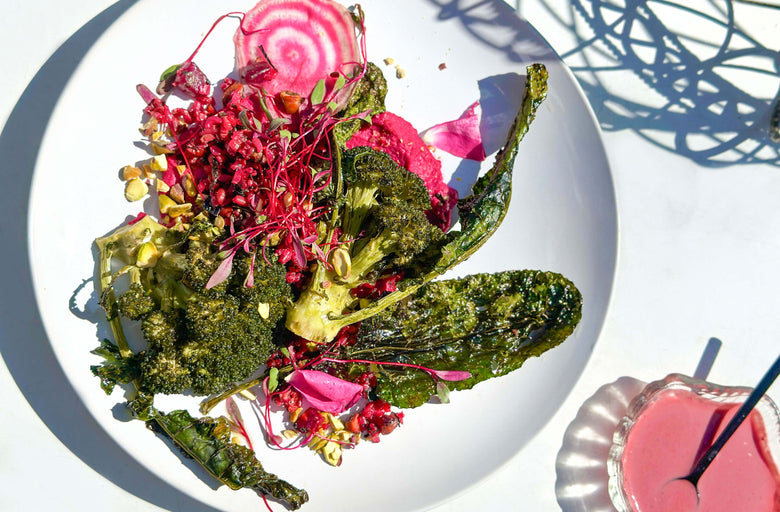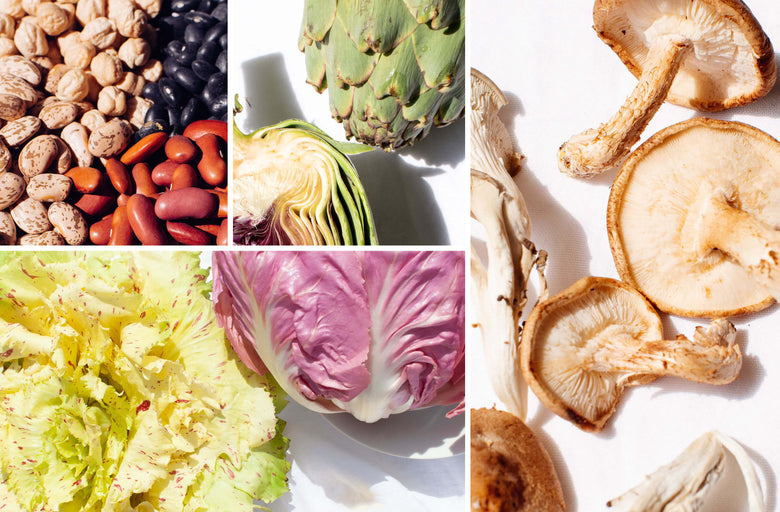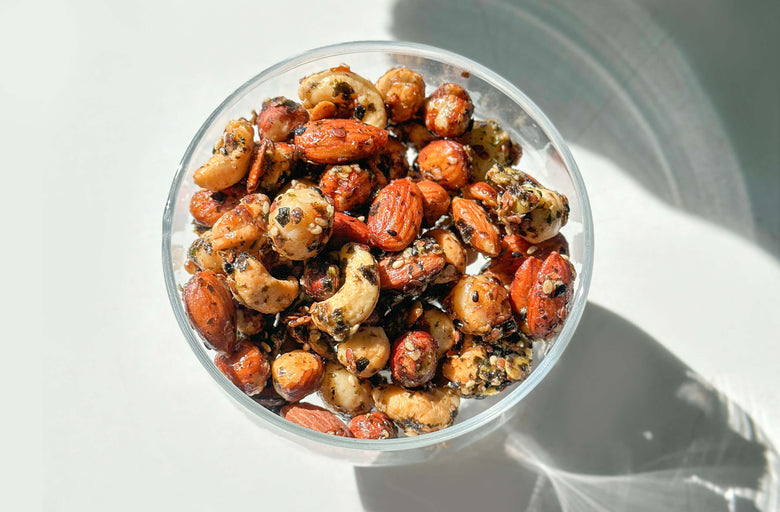Unlike the earth’s soil where plant foods gain their nutritional power, blue spirulina (Arthrospira platensis) is a threadlike, multicellular blue-green alga nurtured in freshwater lakes, streams, and ponds. The blue color comes from the presence of phycocyanin, a phycobiliprotein that carries antioxidant, anti-inflammatory, and neuroprotective effects with its vibrant pigment.
Technically classified as a cyanobacterium, a strain of bacteria that obtains its energy through oxygenic photosynthesis, blue spirulina has been used for centuries as a food source by people across the globe. Aztecs harvested the alga from Lake Texcoco in Mexico and communities have gathered it near the shores of Lake Chad. More recently, The World Health Organization (WHO) supported the use of it to treat malnutrition and NASA likes blue spirulina for its tidy nutritional density—just one gram of this algae has the nutritional equivalent of 1,000 grams of fruits and veggies.

Deep Nutrition
When listing nature’s most nutrient-dense foods, blue spirulina earns its place at the top. It is often described as Mother Nature’s very first protein source. It was the original organism on the planet to make use of the sun’s energy to photosynthesize food for itself. And a brief rundown of its components reads like a who’s who of superfood stats.
-
One tablespoon or seven grams of blue spirulina has four grams of protein; because the cell walls of this blue-green algae are easily broken down, blue spirulina offers a highly absorbable form of protein
- Blue spirulina is one of the only plant proteins to contain 18 of the 20 amino acids including all nine essential amino acids your body can’t produce: histidine, isoleucine, leucine, lysine, methionine, phenylalanine, threonine, tryptophan, and valine
-
Blue Spirulina contains vitamins A, B1, B2, B3, B5, B12, D, E, and K
- It is rich in minerals such as calcium, magnesium, zinc, and selenium
-
It’s a solid source of plant-based iron, with two milligrams per tablespoon
- Blue spirulina has a high concentration of antioxidants, beta carotene, and the second-highest concentration of omega-3 fatty acids (second only to mother’s milk.)
What Makes Blue Spirulina Such a Powerful Detoxifier?
Given its rich profile in protein and vitamins, blue spirulina is an excellent dietary source for muscle recovery and repair, as well as a healthy source of amino acids and fatty acids. But the biggest story on blue spirulina is the many, many ways it helps your body keep the good things and relinquish the bad. By nourishing and quickly replenishing our body’s vital organs and functions, it helps to boost and regulate the immune system, protect against disease-causing free-radicals, support healthy joints, improve recovery time, and prevent viral infections.
More than any other food, blue spirulina has been proven to increase immune cell migration, which is the process of getting healthy cells to where they need to be and killing off all cancerous or otherwise toxic ones5. This is a powerful detoxifying process that anti-inflammatories such as NSAIDs (like Aspirin) and COX-2 cannot complete, as they trigger far too intense of an immune response and end up damaging more cells and tissues than before.
Blue-green algae is similar to chlorella, in that it is able to absorb toxins (such as mercury and fluoride) and assist in swiftly removing them from your body6. It’s important to note here when consuming a hefty dose of blue spirulina (specifically for detoxification purposes) that you should consume more clean water as well, to flush fluids, and support the body’s delicate elimination system.
One final note to add: Due to the potent concentration of healthy omega-3 and omega-6 fatty acids, blue spirulina regulates a helpful detox for mind and mood too, upping mental clarity and balancing hormones, and therefore moods. Blue spirulina also contains a little molecule called phenylethylamine (or PEA), which is naturally produced by the brain and is responsible for pleasure and an encompassing awareness.
The biggest story on blue spirulina is the many, many ways it helps your body keep the good things and relinquish the bad.
The Best of The Blue
Like any food you eat or supplement you invest in, the source matters.
Get certified organic, non-genetically modified (non-GMO) algae. This purity standard will guarantee that the source has been treated with herbicides or pesticides.
Avoid any product that adds “fillers.” Focus on 100 percent pure spirulina so that you do not need a larger amount to reap the benefits of a purer form. Be mindful of any spirulina in a gel capsule, as most of these containers are made from fish oil.
Pure spirulina powders are an easy way to incorporate added nutrients into your daily routine. Sprinkle a serving into your morning smoothie or add it to your favorite salad or soup. The Sakara Kitchen uses Blue Majik Fine Powder in many of our plant-rich meals.
A clean, plant-based nutritional bar with spirulina is a quick, easy way to get your plant protein fix while ridding your system of toxins and alkalizing the body. Our Detox Super Bar has an extra hit of pea protein plus cassava and chicory root, which contain prebiotic fiber for your gut.
More Clean Plant Strategies
Phytoceramides for Better Skin
Are There Nutrition Gaps In Your Diet?
Sources:
- The Evolution and Versatility of Microalgal Biotechnology: A Review Comprehensive Reviews in Food Science and Food Safety (2016)
- Harvest of Arthrospira platensis from Lake Kossorom (Chad) and it’s household usage among the Kanembu, Journal of Applied Phycology (2000)
- Management of the Severely Malnutritoned Child: Perspective From Developing Countries, (2003), BMJ
- Space Food and Nutrition, NASA
- Health Benefits of Blue-Green Algae: Prevention of Cardiovascular Disease and Nonalcoholic Fatty Liver Disease (2013), National Institutes of Health
- Antioxidant Effects of Spirulina Supplement Against Lead Acetate-Induced hepatic Injury in Rats (2015); National Institutes of Health
- Omega-3 Fatty Acids For Mood Disorders, Harvard Health Publishing






